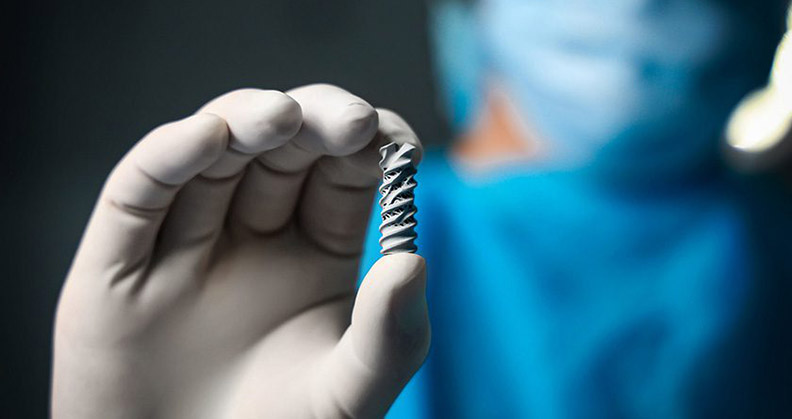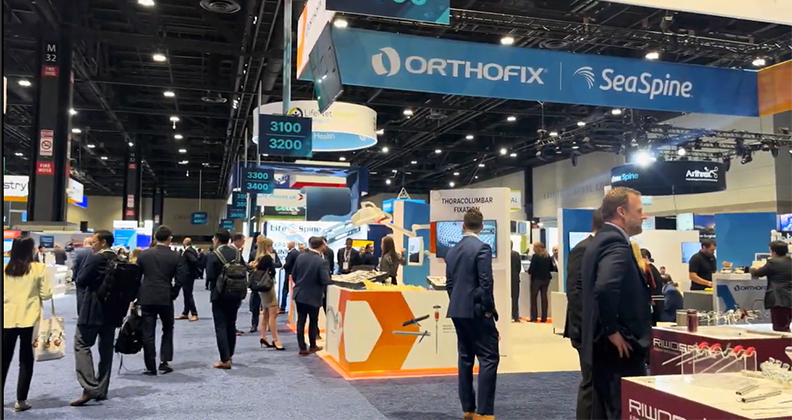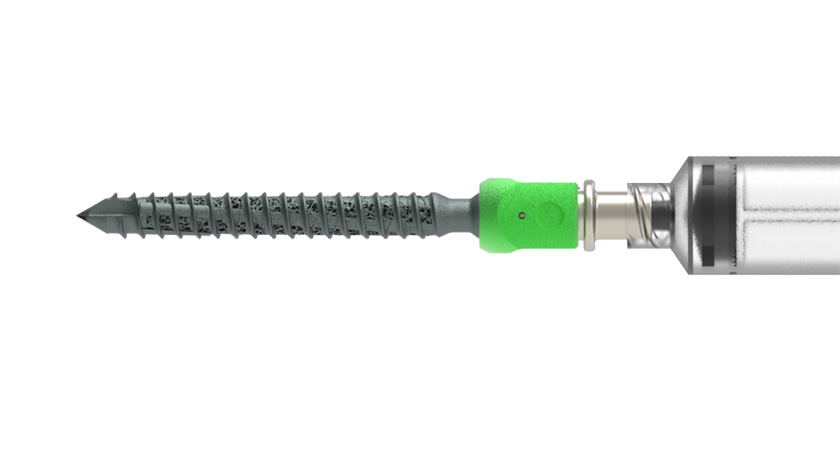
Michael McBrayer goes way back with some of the giants of sports medicine. He was friends with Frank Jobe, M.D., who pioneered Tommy John surgery, and Col. John Feagin, Jr., M.D., a Vietnam veteran and sports medicine titan.
McBrayer carries some cachet of his own. He’s been a respected leader for more than 35 years at Enovis (née DJO). He’s currently Senior Vice President of Business Development and Professional Relations at Enovis and a member of the American Orthopaedic Society for Sports Medicine’s Circle of Honor, which recognizes non-surgeons whose contributions have advanced the field.
We recently connected with McBrayer to learn about efforts to push sports medicine forward. He shared his thoughts on the role that biologics play in enhancing procedures and improving patient outcomes, the emergence of pediatric sports medicine as a growing specialty and the increased focus on strengthening post-op recoveries.
You’ve seen sports medicine advance in many ways throughout your career. How has the specialty evolved in recent years?
McBrayer: The procedures haven’t changed all that much. ACL reconstruction has been refined in terms of the ways grafts are sourced, but the fundamental techniques remain largely the same.
Fluoroscopy certainly has made a difference by allowing surgeons to move from open to more minimally invasive ACL repairs. But even now, when it comes to placing tunnels and passing a graft between the femur and tibia, nothing has changed that much.
It’s fair to say that there hasn’t been a massive leap forward in sports medicine compared to some other fields in orthopedics.
Orthopedic companies and surgeons have begun exploring ways to enhance the healing environment. That’s where platelet-rich plasma and biologics come into play.
How has that understanding of joint preservation influenced surgical techniques and device development?
McBrayer: Early knee procedures were, frankly, abusive to the joint. Today, there’s a much greater appreciation for the importance of preserving cartilage and the meniscus as integral components of joint health.
In the past, meniscectomies were common and often seen as a quick solution. Surgeons believed it was best to remove the meniscus and move on. Now, the pendulum has swung in the opposite direction. We may have even gone too far in trying to salvage every meniscus, but the broader shift toward preserving joint structures is meaningful.
These procedural nuances — focusing on protecting the meniscus and maintaining cartilage integrity — extend the life of the joint and keep the knee as whole and as functional as possible, for as long as possible.
What’s the current state of biologics, and how are they impacting joint care?
McBrayer: There are now societies dedicated to orthobiologics, so formal groups of experts are focused on understanding outcomes and advancing the science. Those kinds of efforts didn’t exist 10 years ago and provide an idea of how far the space has come in a relatively short time.
But evaluating long-term outcomes associated with biologics remains a challenge. Some of the studies are difficult to interpret, especially when it comes to measuring consistent, meaningful results.
That said, the field is maturing. Experts have organized efforts to make it more evidence-based and scientific.
Now, the focus is on truly understanding the benefits of biologics and combining them with mechanical fixation. It’s about a comprehensive approach to promoting healing and stability in joints.
What factors are orthopedic companies and surgeons addressing to improve patient outcomes?
McBrayer: We’re starting to see things like internal braces being used more often. These are nuanced enhancements to existing, well-established procedures.
Take the ulnar collateral ligament as an example. Dr. Jobe performed the first Tommy John surgery nearly 50 years ago. Remarkably, the procedure’s core technique hasn’t changed all that much. Refinements have been made, like the addition of internal bracing, but the foundational approach remains very similar to what’s still being done today.
I think what’s evolved is the broader scope of care. Surgeons today are not only focused on the operation itself, but also on injury prevention and optimizing patient recoveries.
Postoperative care has come a long way in that regard. There’s now a stronger emphasis on collaboration with physical therapists and the development of comprehensive rehab plans.
Surgeons no longer think their job begins and ends in the O.R. Their mindset has shifted to focusing on what’s best for individual patients during the entire scope of care, and what support and treatments are needed to get them back to being fully functional.
What are the challenges and opportunities in pediatric sports medicine, and why must companies address the unique needs of this patient population?
McBrayer: The number of kids involved in organized sports has grown significantly, and they’re engaged in repetitive movement and physical strain that leads to real injuries.
The Pediatric Research in Sports Medicine (PRiSM) organization takes a multidisciplinary approach that includes physical therapists, athletic trainers, surgeons and primary care physicians working together to improve the care of pediatric athletes. The organization is approaching pediatric injuries differently than adult injuries, and rightly so.
One of the most important lessons learned, and it’s something we take seriously as a company, is that kids are not just small adults. That’s one of the first, most fundamental realizations in pediatric care. Shrinking down adult products or protocols doesn’t work.
The uniqueness of pediatric patients starts with their anatomy. Their growth plates are open, their biomechanics are different, and recovery trajectories can vary significantly from adults. These factors impact how we treat, support and design products for young athletes.
I think we’ll continue to see increasing numbers of companies recognize this shift. As more physicians are specially trained in pediatric sports medicine and focused on the nuances of treating growing bodies, the industry will need to respond with appropriately designed products, treatment protocols and support systems tailored to this patient population.
How are treatment strategies evolving to help patients before they need joint replacements?
McBrayer: There’s now a strong consensus that modern prostheses can last the lifetime of many patients. Because of this implant durability, some surgeons are becoming more aggressive in recommending total joint replacements, even in younger patients.
The real area of advancement in orthopedics is helping patients before they reach the point of needing a joint replacement.
Osteoarthritis (OA) will affect roughly half of the U.S. population at some level during their lifetimes. It’s a huge issue. And musculoskeletal care is one of the most expensive line items in our healthcare system.
OA causes significant pain and disability, and musculoskeletal conditions lead to more work loss than any other category. But unlike many diseases, OA isn’t life-threatening, so it often doesn’t get the attention it deserves despite its widespread impact on quality of life and workforce productivity.
Patient care would improve significantly if we can help individuals manage OA with a brace or other conservative treatments until the time comes for a total knee replacement. These conservative approaches can extend quality of life and delay surgery.
What excites you the most about future advancements in sports medicine?
McBrayer: We’re seeing more surgeons coming to us with ideas on how to improve sports medicine treatments. They’re a unique group. They work incredibly hard, and innovation really is part of their DNA.
Physicians are always looking for the next advancement. They’re not complacent.
They show genuine excitement, whether it’s by creating something new themselves or adopting new technologies, to improve patient outcomes. That drive to innovate and constantly seek better solutions is what excites me the most.
DC
Dan Cook is a Senior Editor at ORTHOWORLD. He develops content focused on important industry trends, top thought leaders and innovative technologies.




